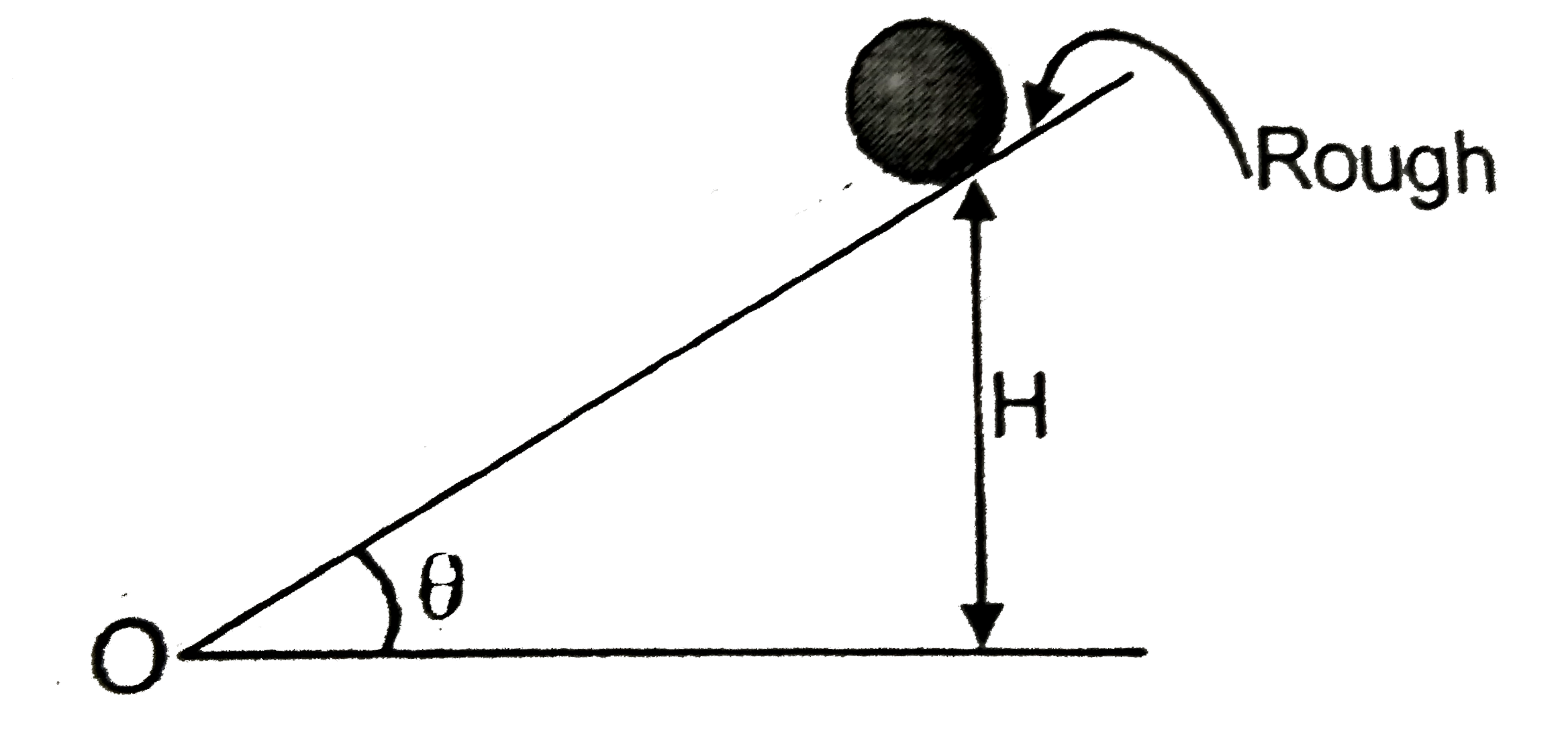A solid iron ball of mass 500 g is dropped in mercury contained in a beaker.
What will be the apparent weight of the ball?
To find the apparent weight of a solid iron ball of mass 500 g when it is dropped into mercury, we can follow these steps:
Step 1: Understand the concept of apparent weight
The apparent weight of an object submerged in a fluid is the weight of the object minus the buoyant force (upthrust) acting on it. The buoyant force is equal to the weight of the fluid displaced by the object.
Step 2: Calculate the weight of the iron ball
The weight of the iron ball can be calculated using the formula:
Weight=mass×g
where g is the acceleration due to gravity (approximately 9.81m/s2).
Given:
- Mass of the iron ball = 500 g = 0.5 kg
Calculating the weight:
Weight=0.5kg×9.81m/s2=4.905N
Step 3: Determine the buoyant force (upthrust)
Since the iron ball is dropped into mercury, it will experience a buoyant force. The buoyant force can be calculated using Archimedes' principle, which states that the buoyant force is equal to the weight of the fluid displaced by the object.
However, in this case, since the iron ball is denser than mercury, it will float. Therefore, the buoyant force will equal the weight of the iron ball.
Step 4: Calculate the apparent weight
The apparent weight can be calculated using the formula:
Apparent Weight=Weight of the ball−Buoyant Force
Since the buoyant force is equal to the weight of the ball:
Apparent Weight=4.905N−4.905N=0N
Conclusion
The apparent weight of the iron ball when submerged in mercury is 0 N because the buoyant force equals the weight of the ball.
---
The apparent weight of an object submerged in a fluid is the weight of the object minus the buoyant force (upthrust) acting on it. The buoyant force is equal to the weight of the fluid displaced by the object.
The weight of the iron ball can be calculated using the formula:
Weight=mass×g
where g is the acceleration due to gravity (approximately 9.81m/s2).
- Mass of the iron ball = 500 g = 0.5 kg
Weight=0.5kg×9.81m/s2=4.905N
Since the iron ball is dropped into mercury, it will experience a buoyant force. The buoyant force can be calculated using Archimedes' principle, which states that the buoyant force is equal to the weight of the fluid displaced by the object.
The apparent weight can be calculated using the formula:
Apparent Weight=Weight of the ball−Buoyant Force
Apparent Weight=4.905N−4.905N=0N
The apparent weight of the iron ball when submerged in mercury is 0 N because the buoyant force equals the weight of the ball.
Topper's Solved these Questions
- FLUIDSBOOK - ICSECHAPTER - FLUIDSEXERCISE - TOPIC 2 (3 Marks Questions )
23 Videos
- FLUIDSBOOK - ICSECHAPTER - FLUIDSEXERCISE - TOPIC 2 (4 Marks Questions )
16 Videos
- FLUIDSBOOK - ICSECHAPTER - FLUIDSEXERCISE - TOPIC 1 (4 Marks Questions )
10 Videos
- ELECTRICITY AND MAGNETISM BOOK - ICSECHAPTER - ELECTRICITY AND MAGNETISM EXERCISE - TOPIC 2 Magnetism (4 Marks Questions )
6 Videos
- HEAT AND ENERGYBOOK - ICSECHAPTER - HEAT AND ENERGYEXERCISE - EXERCISE -6(D) Multiple Choice Question)
4 Videos
Similar Questions
A solid iron ball of mass 500 g is dropped in mercury contained in a beaker.
Will the ball float or sink? Give reasons.
View SolutionYou are provided with a hollow iron ball A of volume 15cm3 and mass 12 g and a solid iron ball B of mass 12 g. Both are placed on the surface of water contained in a large tub.
Find upthrust on each ball.
View SolutionYou are provided with a hollow iron ball A of volume 5cm3 and mass 12 g and a solid iron ball B of mass 12 g. Both are plced on the surface of water contained in a largetub. A. Find upthrust on each ball. B. Which ball will sink? Give reason for your answer. (Density of iron =8.0gm−3)
View SolutionYou are provided with a hollow iron ball A of volume 15cm3 and mass 12 g and a solid iron ball B of mass 12 g. Both are placed on the surface of water contained in a large tub.
Which ball will sink? Give a reason for your answer. (Density of iron = 8.0g cm−3)
View SolutionA cylindrical beaker, whose base has a radius of 15 cm, is filled with water up to a height of 20 cm. A heavy iron spherical ball of radius 10 cm is dropped to submerge completely in water in the beaker. Find the increase in the level of water.
View SolutionA cylindrical tub of radius 16cm contains water to a depth of 30cm. A spherical iron ball is dropped into the tub and thus level of water is raised by 9cm. What is the radius of the ball?
View SolutionA cylindrical tub of radius 12 cm contains water to a depth of 20 cm. A spherial iron ball is dropped into the tub and thus the level of water is raised by 6.75 cm. What is the radius of the ball?
View SolutionA ball is dropped from a spacecraft revolving around the earth at a height of 1200km. What will happen to the ball ? .
View SolutionA ball of mass 50 g is dropped from a height of 20 m. A boy on the ground hits the ball vertically upwards with a bat with an average force of 200 N, so that it attains a vertical height of 45 m. The time for which the ball remains in contact with the bat is [Take g=10m/s2]
View SolutionA solid ball of mass 'm' is released on a rough fixed inclined plane from height H. The ball will perform pure rolling on the inclined plane. Then

View Solution
